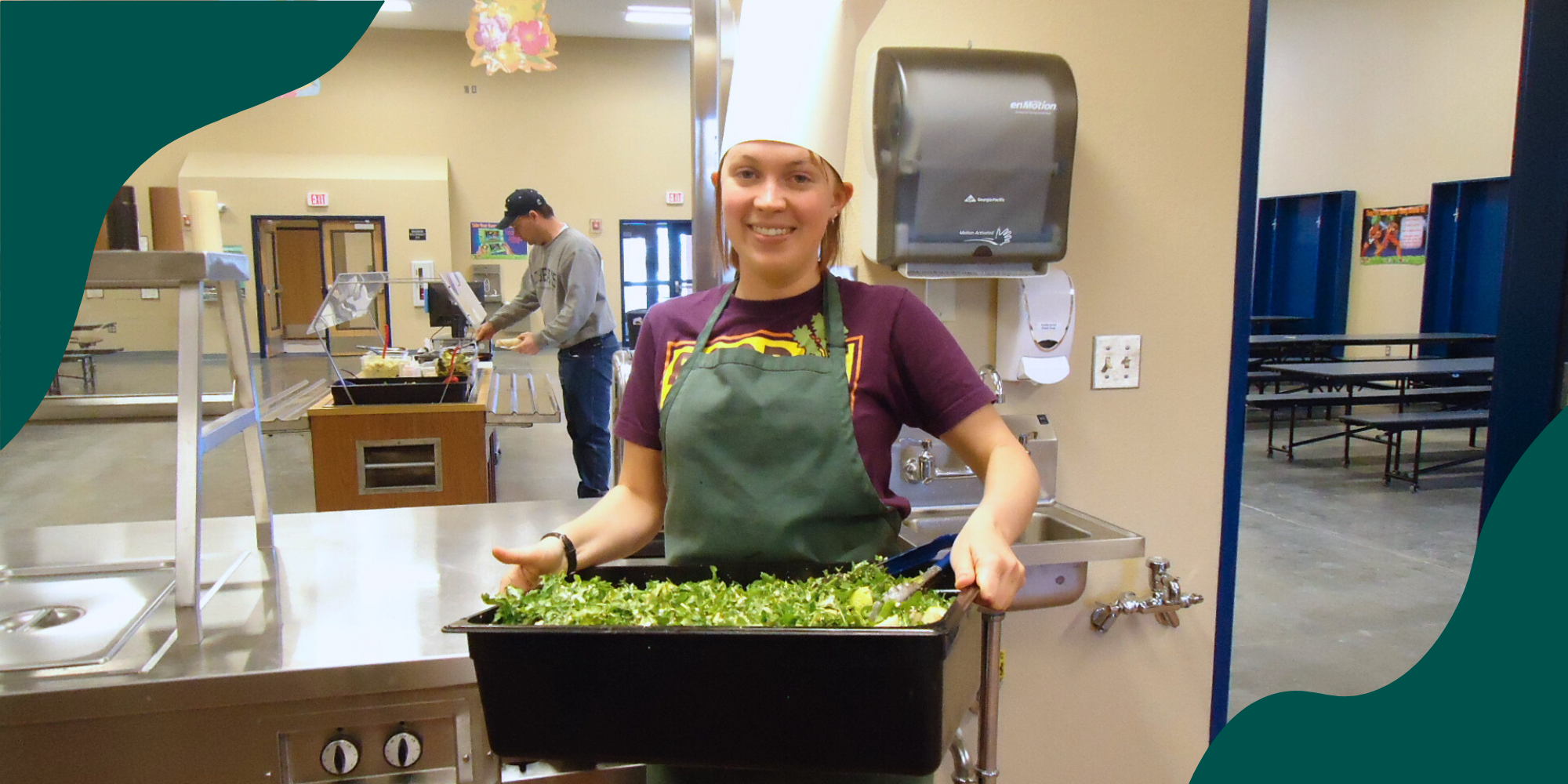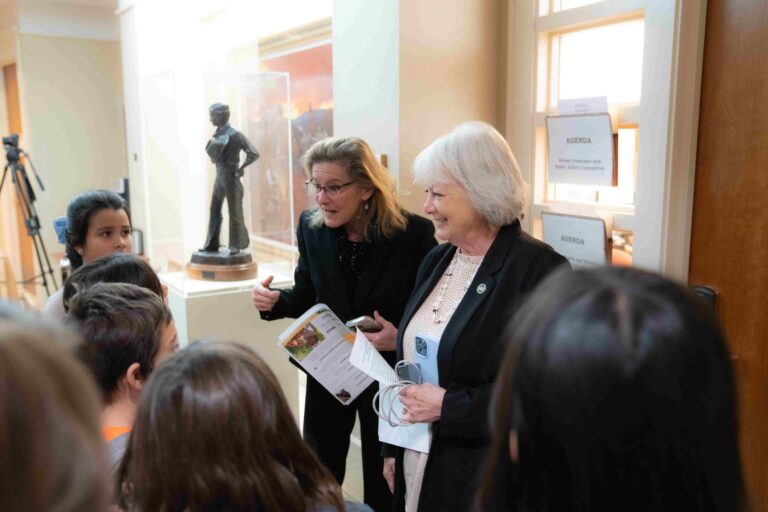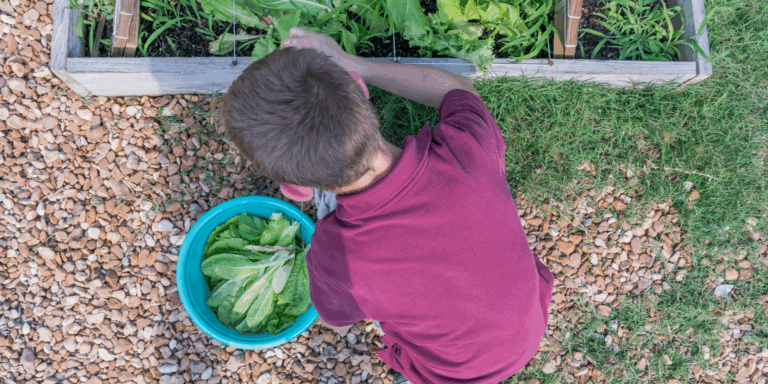Fighting Hunger and Making Food Fun
When food is abundant for all, it’s easier to try new foods.
Help nourish students’ minds, bodies, and hearts this holiday season!
When food is abundant for all, it’s easier to try new foods.

Food should be fun. Instead of just sustaining our bodies and staving off hunger, food should be something we play with, build community around, and find pleasure in. Everyone deserves to enjoy the process of nourishing our bodies. This conviction is what initially brought me to serve with FoodCorps.
When I was a service member in rural eastern Oregon in 2012-2013, my elementary school students were eager to try every recipe I introduced. Through interactive cooking and gardening activities, my students grew more willing to try new things, were more engaged in class, and developed new interests in building long-term healthy habits. Whether it was beet smoothies, endive boats, or roasted eggplant, they had overwhelming enthusiasm for these taste tests.
It quickly became clear that the main barrier to eating healthily in my community wasn’t education, but access. Few of my students came from households who could easily afford the 20-mile drive to the nearest grocery store, let alone the food itself. Many regularly experienced hunger, which meant our taste tests provided nourishment they might not find elsewhere.
Despite the fun we were having, my efforts felt inadequate. My students had few opportunities to play with food once they left the classroom and it was hard to see my impact. I realized that food can’t be fun unless everyone has access, and this epiphany shaped me into an anti-hunger advocate.
Over the last decade, I transitioned to fighting hunger working in food pantries. Food pantries are a stigmatized and often uncomfortable way to distribute food to people experiencing hunger, but I fell in love with finding new ways to help them grow more welcoming and useful.
Because food pantries usually have a limited food supply, they often have no choice but to provide families with much less food than they need. This focus on scarcity transfers to shoppers, who worry about looking greedy in front of volunteers, some of whom make judgmental comments about full shopping carts. Many anti-hunger programs provide inadequate resources, placing responsibility on the individual to make up the gap, rather than addressing failures in the system.
To make food fun, I realized that pantries have to celebrate abundance. When families don’t have enough food to feel secure, there’s little room to take risks like trying a new food or experimenting with a new recipe. For people experiencing hunger, buying a new food may mean they don’t eat at all if they don’t like it. Facing the high cost of groceries, families depend on items they can afford rather than the ones that bring joy and nourishment. But when food pantries allow shoppers to take the foods they need in the amounts they want, they encourage families to take risks, experiment with new recipes, and try new foods because they aren’t risking hunger.
At the food pantry where I worked in Vancouver, Washington, as Operations Manager, I heaped our shelves precariously high with dried beans. Bins of lettuce dominated the center of the room, while tall stacks of yogurt wobbled in the coolers. Bags of corn leapt out of the overfull freezer when you opened the door. Even when we didn’t have as much as we needed, I learned how to arrange food so that it still looked abundant.
When our shoppers walked in, they saw that there must be enough food for everyone.
One radical and revolutionary move was to eliminate most of the limits on the food supply. Previously our shoppers were only allotted one or two of each food type to ensure we never ran out, but now were allowed to take what they wanted without restriction. We removed the signs with limits written on them, which initially caused even greater confusion; shoppers assumed they couldn’t possibly be allowed to take all they wanted. Clients accustomed to having to choose between essentials suddenly had the autonomy to fill their cart. Although our output certainly increased, we found balance as everyone made different choices that complemented what we had to offer.
When you’re struggling to feed your family every day, there’s little room to take risks and try a new food. There’s simply no allowance for taking a chance or making a mistake. But by fostering a sense of abundance, we empowered our shoppers to have fun with what they ate.
One of our clients had never tried Brussels sprouts before. She had never had the money to buy something that she wasn’t sure her family would eat. The risk simply wasn’t worth it. But with our pantry’s attitude of abundance, we encouraged her to take as much as she wanted and not just what she needed.
The next week she walked in our front door and shouted, “I LOVE BRUSSELS SPROUTS!” It turns out she just needed the capacity to take that risk.
When people are worried about having enough to eat, it’s not safe to experiment. But when we are secure in our food supply, it is safe to take risks. To try a vegetable we’ve never seen before, experiment with a new recipe, or taste a new cuisine. Making food fun depends on having a sense of abundance.
Right now, it’s hard not to adopt a scarcity mindset as funding is cut, resources are eliminated, and prices rise. Food pantries are certainly struggling to keep their shelves looking full. But it’s more important than ever that we find ways to celebrate abundance and grant the communities around us the autonomy to take risks, to play, and to find fun in the food we’re all eating.
Anina Estrem is a FoodCorps alum (OR ’13). Learn how you can join FoodCorps’ service program.

Our 2025 Child Nutrition Policy Year in Review

Winterizing Your School Garden

5 Awesome Small Businesses by FoodCorps Alums